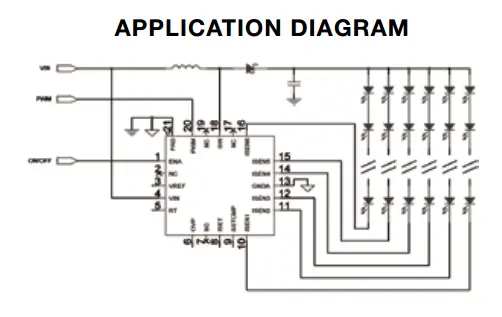As an electronics engineer with over a decade of experience, I’ve pored over countless datasheets in my career. Today, I want to share my insights on interpreting datasheets, using the hypothetical 95012554 B component as our example.
Whether you’re a seasoned professional or a curious hobbyist, understanding how to read a datasheet is crucial for anyone working with electronic components. Let’s dive in!
What is a Datasheet?
Before we delve into the specifics of the 95012554 B, let’s start with the basics. A datasheet is a technical document that provides detailed information about a specific electronic component or integrated circuit (IC). It’s essentially the component’s ID card, containing all the vital information you need to properly use it in your designs.
The Importance of the 95012554 B Datasheet
In my years of experience, I’ve learned that no two components are exactly alike, and the 95012554 B is no exception. Its datasheet is your go-to resource for understanding its unique characteristics, capabilities, and limitations. Whether you’re designing a new circuit or troubleshooting an existing one, this document is invaluable.
Breaking Down the 95012554 B Datasheet
Let’s walk through the typical sections you might find in the 95012554 B datasheet and what they mean:
1. General Description
This section usually provides an overview of the component. For our hypothetical 95012554 B, it might describe it as a “high-speed, low-power operational amplifier” or a “precision voltage regulator,” depending on its function.
2. Features and Benefits
Here, you’ll find a bullet-point list of the component’s key features. For the 95012554 B, this might include things like:
- Wide operating voltage range
- Low quiescent current
- High output current capability
- Thermal shutdown protection
3. Applications
This section lists common use cases for the component. The 95012554 B might be suitable for applications like:
- Portable electronics
- Automotive systems
- Industrial control equipment
- Medical devices
4. Absolute Maximum Ratings
This is a critical section that I always pay close attention to. It specifies the maximum operating conditions the component can withstand without damage. Exceeding these limits can lead to immediate failure or reduced lifespan of the component.
For the 95012554 B, this might include:
- Maximum supply voltage
- Maximum output current
- Operating temperature range
- Storage temperature range
5. Electrical Characteristics
This section is the heart of the datasheet, providing detailed specifications of the component’s performance under various conditions. For the 95012554 B, you might find parameters like:
- Input offset voltage
- Input bias current
- Gain bandwidth product
- Slew rate
- Power supply rejection ratio (PSRR)
6. Typical Performance Characteristics
Here, you’ll find graphs and charts showing how the component behaves under different conditions. These visual aids can be incredibly helpful when designing your circuit. For the 95012554 B, you might see graphs of:
- Output voltage vs. load current
- Quiescent current vs. temperature
- Noise spectrum
7. Application Information
This section often provides circuit diagrams and design tips for common applications of the component. It’s a goldmine of practical information that can save you hours of trial and error.
8. Package Information
Details about the physical dimensions and available package types for the 95012554 B would be found here. This is crucial for PCB layout and thermal management considerations.
My Personal Experience with Datasheets
In my early days as an engineer, I made the mistake of skimming datasheets rather than studying them thoroughly. This led to a particularly memorable incident where I designed a circuit using a voltage regulator without paying attention to its dropout voltage. The result? A malfunctioning prototype and a valuable lesson learned.
Since then, I’ve developed a habit of carefully reviewing each section of a datasheet before incorporating a new component into my designs. This attention to detail has saved me countless hours of troubleshooting and prevented many potential issues.
Tips for Reading the 95012554 B Datasheet
Based on my experience, here are some tips for getting the most out of the 95012554 B datasheet:
- Start with the General Description and Features: This gives you a quick overview of whether the component is suitable for your application.
- Pay close attention to Absolute Maximum Ratings: Never exceed these limits in your design.
- Study the Electrical Characteristics carefully: These specs define how the component will behave in your circuit.
- Don’t ignore the fine print: Notes and footnotes often contain crucial information.
- Use the Application Information: The examples provided can be a great starting point for your own designs.
- Compare multiple datasheets: If you’re considering alternatives to the 95012554 B, comparing datasheets can help you make an informed decision.
Common Pitfalls to Avoid
Over the years, I’ve seen (and made) many mistakes when interpreting datasheets. Here are some common pitfalls to watch out for when working with the 95012554 B or any other component:
- Misinterpreting Typical vs. Maximum values: “Typical” values are not guaranteed, always design for the worst-case scenario.
- Overlooking operating conditions: Specifications often change with temperature, supply voltage, or load conditions.
- Ignoring thermal considerations: Even if you’re within the absolute maximum ratings, prolonged operation at high temperatures can degrade performance or reduce lifespan.
- Misunderstanding datasheet graphs: Pay attention to the scales and conditions specified for each graph.
- Neglecting bandwidth limitations: For high-speed applications, make sure the 95012554 B can handle your required frequencies.
The Broader Context: Why Datasheets Matter
In today’s fast-paced world of electronic design, it’s tempting to rely on pre-made modules or copy reference designs without fully understanding the components involved. However, I’ve found that a deep understanding of datasheets like the 95012554 B’s is invaluable for several reasons:
- Optimizing Designs: Knowing the exact capabilities of your components allows you to push your designs to their full potential.
- Troubleshooting: When problems arise, familiarity with your components’ datasheets can significantly speed up the debugging process.
- Cost Optimization: Understanding component specifications helps you avoid over-engineering and choose the most cost-effective parts for your application.
- Reliability: By designing within component limitations, you can ensure the long-term reliability of your products.
- Innovation: A deep understanding of component characteristics can inspire novel circuit designs and applications.
The Future of Datasheets
As technology evolves, so do datasheets. In recent years, I’ve noticed some interesting trends:
- Interactive Datasheets: Some manufacturers are now providing interactive online datasheets with built-in calculation tools and simulators.
- Video Supplements: To aid in understanding complex components, some datasheets now come with accompanying video explanations.
- AI-Assisted Search: Advanced search tools are making it easier to find specific information within lengthy datasheets.
- Environmental Information: With growing emphasis on sustainability, more datasheets are including information about material composition and environmental impact.
Conclusion:
As we’ve explored the hypothetical 95012554 B datasheet, I hope you’ve gained a deeper appreciation for these technical documents. They may seem daunting at first, but with practice, reading datasheets becomes second nature.
Remember, every electronic device you use – from your smartphone to your car’s ECU – was designed by engineers poring over datasheets just like the 95012554 B’s. By mastering the art of datasheet interpretation, you’re not just improving your technical skills; you’re gaining the power to understand and innovate in the world of electronics.
Whether you’re working with the 95012554 B or any other component, take the time to really dig into its datasheet. You’ll likely discover nuances and capabilities you hadn’t considered before. And who knows? That deep understanding might just inspire your next great design breakthrough.







